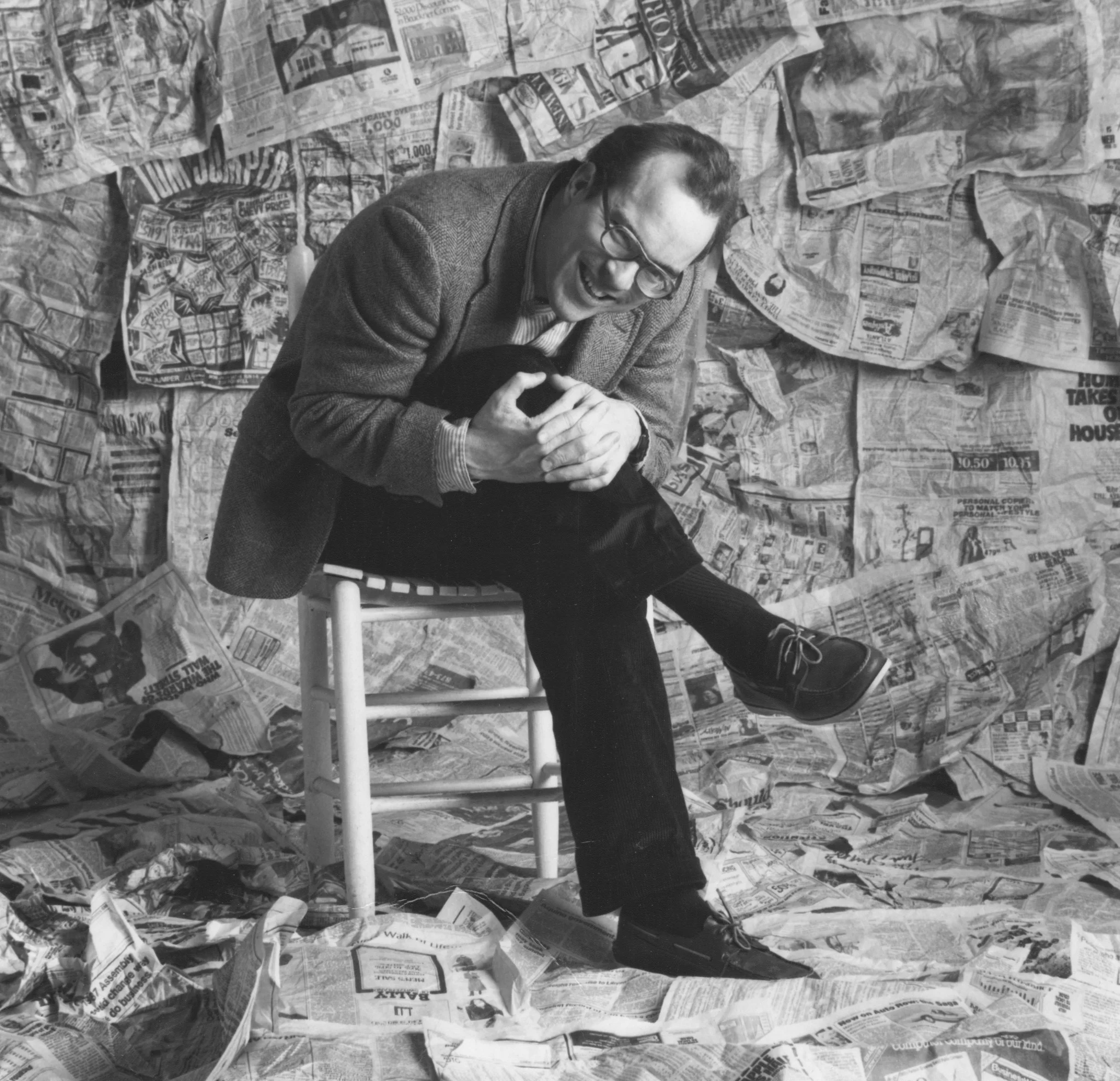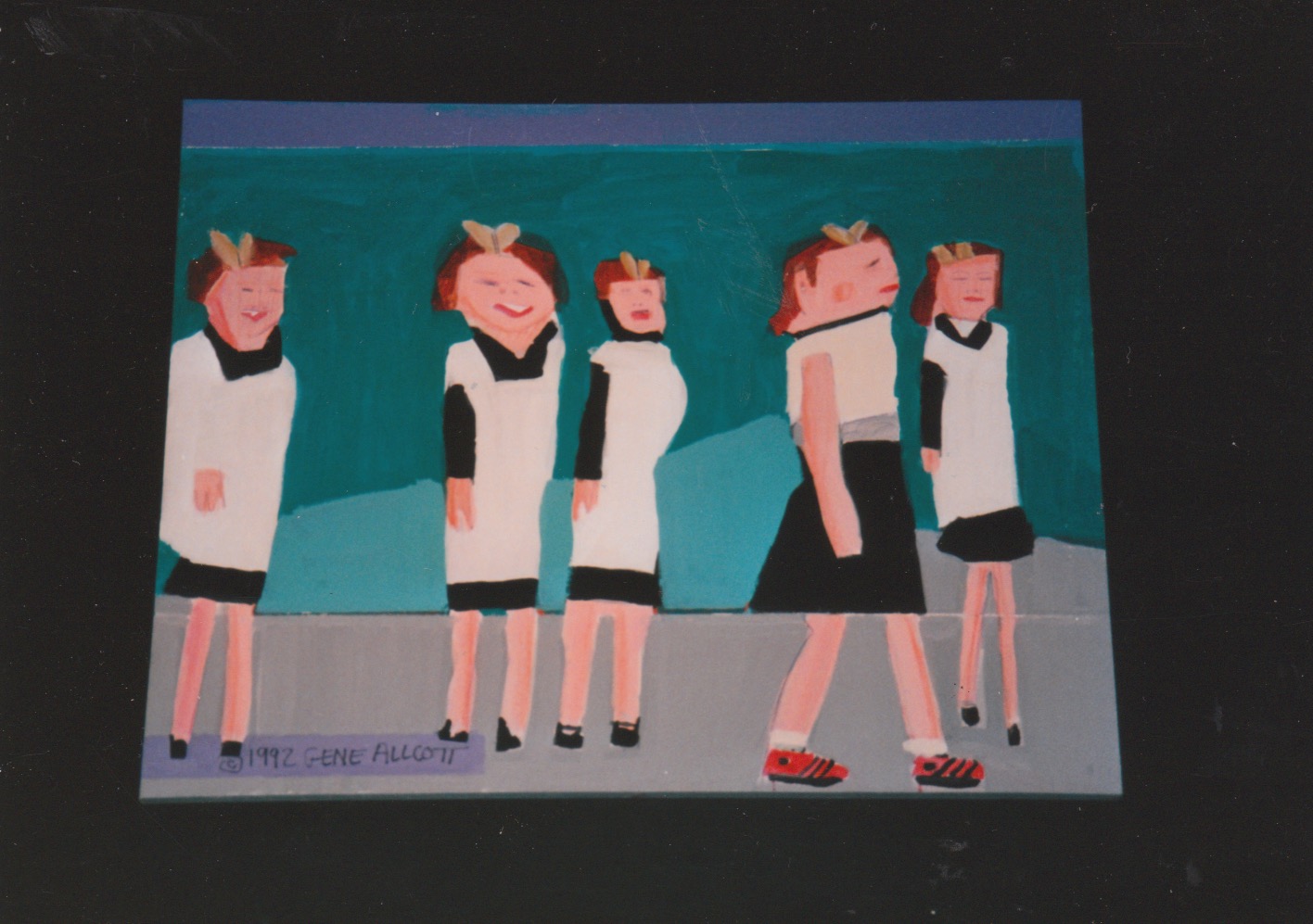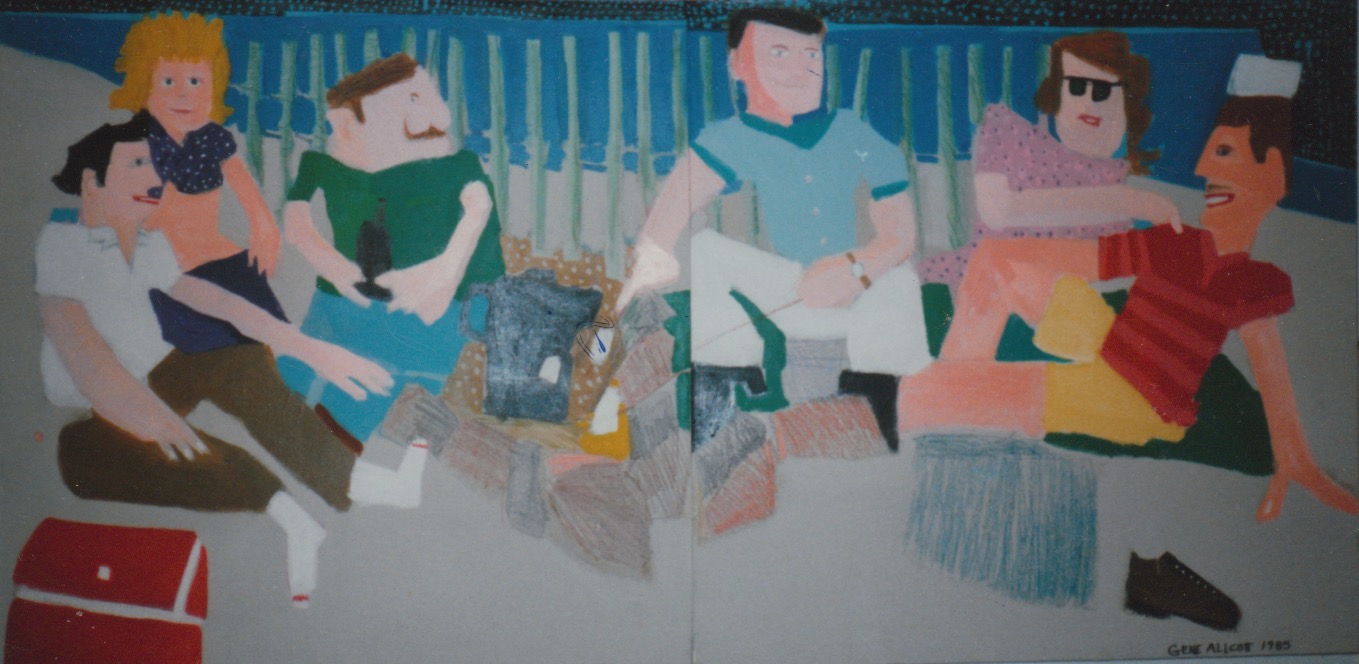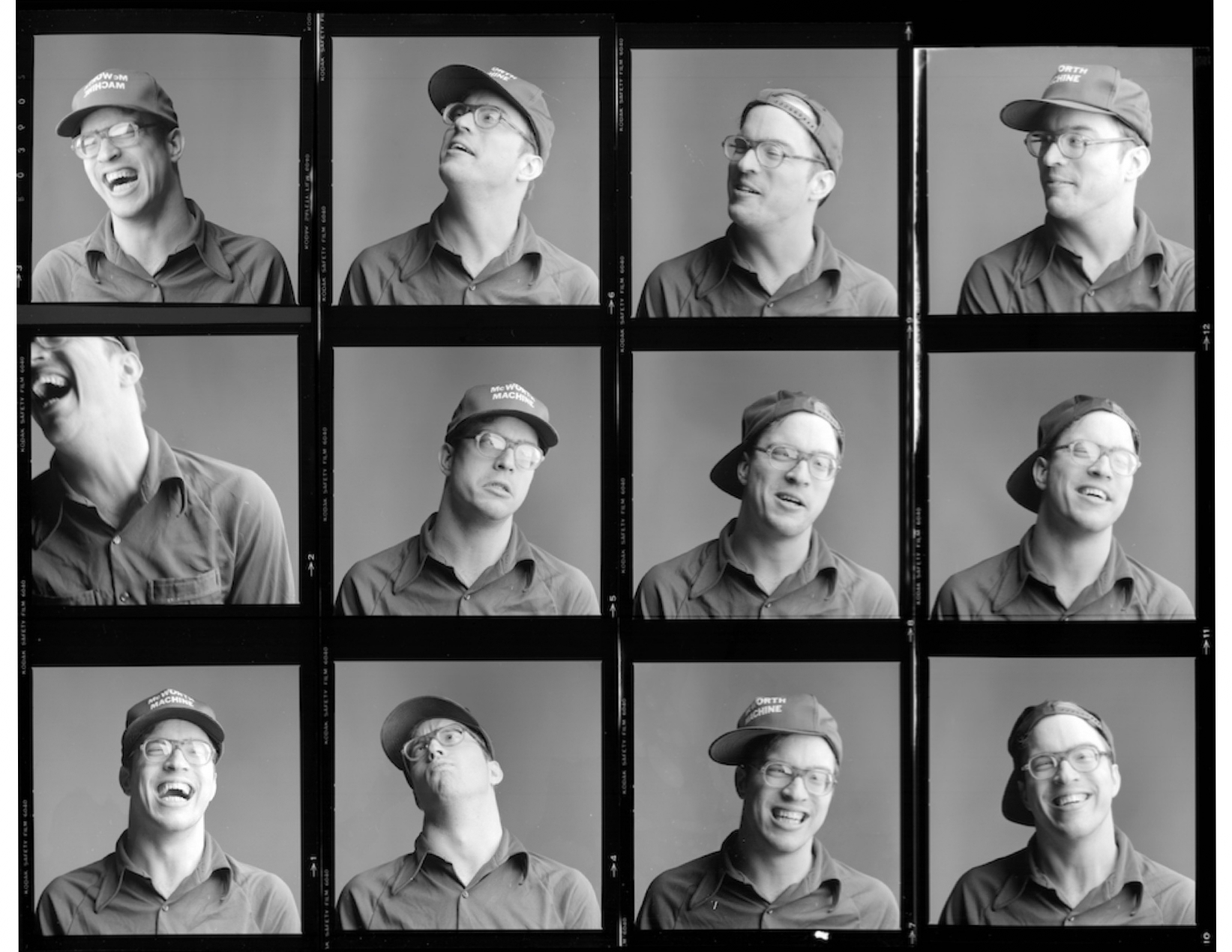
The Project…
The treasure hunt is on to uncover and showcase art by this well-loved Atlanta artist. And not to be overlooked, he was legally blind. Wearing extra-thick glasses, his head bobbing for a clearer view, Gene Arthur Allcott created LOTS of paintings during his lifetime, and many of his works (and their owners) are still unknown. We’d love you to help us discover everything that’s out there. Here are 3 ways you can engage in The Gene PROJECT:
Learn about Gene Allcott. There’s incredible art! There are zany—and we do mean ZANY—stories! And there’s his remarkable legacy that helps art students. So scroll around the site and learn about Gene… the parades he organized, the fireworks he set off, the fake snakes in his pocket. Such fun!
Leave ua a message about works you own and share your GENE stories. Or if you have a painting to sell.
Legacy will keep you up to speed on the latest Gene Allcott scholarships, student trips to New York City and Friends of Gene events, all part of Savannah College of Art and Design (SCAD), in Atlanta.
“Coming upon one of his paintings is like stepping out of a dark theater in mid-afternoon.”
“This is the home of Atlanta’s most popular artist.” The message on Gene Allcott’s phone was self-proclaimed, of course. It ended with his infectious laugh and these words: “Just send a check or leave a message.”
Art was Gene’s world; friends and fun his inspiration. His early appearance on June 17, 1953, came prematurely with him weighing in at 2 pounds, 14 ounces. Gene grew up in Chapel Hill, N.C., where his father John was founder and first chairman of the University of North Carolina’s Art Department and his mother June worked as a counselor in UNC's Guidance and Testing Department. Despite his visual impairment, a complication of the high oxygen content in his incubator, Gene drew as a youngster on paper, canvas, scraps of lumber — whatever was handy. While in high school he even painted a billboard on the way out of town: an ad for the Ranch House Restaurant, in exchange for $100 in food vouchers.
“I wish you could see the world the way I see it!”
Gene’s wheeling and dealing meant he was no stranger to barter: art exchanged for food. Art for legal services…. Once in high school he came up with Face Your Dummy — a plan to emblazon foot-high round cutouts with a happy face. So Gene made hundreds of Face Your Dummy cutouts in Mole Studios, his nom de palette. (That mole idea inspired a mole tattoo on his ankle.) Another time, Backyard Buddies captivated him. The result: paintings, silk-screens and banners of children at play on trikes and skateboards. As he dreamed up new series — Buckhead Babes, Caribbean, New World Order, etc. — Gene had this cool way way of saying, “Oh, I have an idea that will knock your socks off.”
After attending the California Institute of the Arts (1972 - 1973), Gene moved to Atlanta where, in 1977, he graduated from the Atlanta College of Art. He continued to paint and live in Atlanta, where he married Mary Alice Giblin on Valentine’s Day, in 1990. Two years later, on March 28, 1992, only 38 and with two exhibits up in Atlanta (“Gene Allcott: New World Order,” the Berlin Club and “Gene Allcott,” Castlegate Hotel; view his Exhibits + Awards), Gene died accidentally when he fell out of the back of a truck. He was helping a friend move to a new apartment… Gene was always helping others. — adapted from “I Wish You Could See the World the Way I See It,” exhibition brochure, Atlanta College of Art, 1999
From Gene himself: Gene once characterized his paintings as a cross between folk art “because it’s crude and primitive” and pop art “because of the brightness of its colors. Color is very important to me.” Another time he commented: “I see art as a service, like being a preacher or teacher. You have something to give. I’ve sold paintings for a quarter. I’ve sold them for thousands of dollars. In business, I try to deal with people as people. If I like you, I do business. I only care about one thing. That’s being able to come up every once in a while with a really good painting. I’ve been awfully fortunate to do what I’m doing and not wait ’til I’m 65.”’
“Gene Allcott was a force field,” says retired Savannah College of Art and Design professor Larry Jens Anderson. ”His passion for painting, business, and people was without equal. His art had the feeling of a very talented untrained artist which was not true. He graduated with an BFA from The Atlanta College of Art where he reveled in printmaking and painting. His answering machine said so much about him, ‘Hello, this is Gene Allcott, legally blind artist.’ The oversized figures and bright colors were equal to the size and glowing brilliance of his personality.
“Toulouse Lautrec recorded his situations in life with paintings, drawings and prints,” continues Anderson. “Many of the fairly outlandish portrayals involved colors running amuck with great success. Gene was on that path. He recorded his friends and situations with over-sized figures so he could see them on the canvas and the record his viewpoint.” In talking about “Redeeming of Life,’ Anderson said: “Gene’s paintings are examples of his formal skill with color, composition and story-telling. True tales or not they convey the internal interaction of each individual in the three groupings. It is the uniqueness he gave to each person that makes the narratives come alive. Gene studied people and put the tension in his work.”
“Gene Allcott was not just an artist,” says art curator Brenda de la Cruz. “He was an embodiment of art. Gene’s triptych, The Redeeming of Life, Stages of Man I, II and III is, at once, a masterful and magical combination of color, composition, and storytelling. It is Gene’s signature statement about his unselfish love and passion for people and life. Gazing into Gene’s triptych one does not merely encounter an “extension of the artist” — rather, one encounters Gene Allcott himself!”
Accolades, on High
Soon after my arrival in Atlanta, we had an open house reception for me to get acquainted with members of the art community here. It was a lively evening at the High Museum and I was overwhelmed with the level of energy that the artists and dealers and critics brought with them.
But the singular memory I shall always have of that evening is when Gene introduced himself to me. He came right up with a warm smile on his face and said, “I just want you to know how glad I am that you are here and to prove it I wanted to hand you my check for membership.” I was delighted and wrote him a personal note thanking him for the special welcome. As you know, Gene had a unique energy and enthusiasm that was contagious. —Ned Rifkin, former Director, High Museum of Art, Atlanta
A Portrait of Gene
To honor Gene, I’d like to paint a portrait of him. He’d be wearing a baseball cap with a T-shirt, plaid shorts and high-top tennis shoes. He’d be sitting at the dinner table, because I can’t think of Gene without thinking of his prodigious appetite and all the meals we shared.
The color scheme would be easy. Vivid primary colors: blues, reds, yellows and green — bright colors to show his colorful character and the vivid way he lived his life. Next I’d pay attention to some physical characteristics. First, his eyes that saw everything in his special way, especially behind his coke-bottle lenses in frames set slightly askew on his head. Eyes that acted as a filter so he saw only the good in people. He’d be smiling in the portrait — that big smile that started in his eyes and consumed the rest of his face before it was over.
Next I’d place a prism at the table, one that takes ordinary light and reflects its many beautiful bright colors, much the way Gene took the ordinary and reflected it onto our lives in bright colors. Finally, I’d name the picture, but that would be easy. I’d just call it “G. Allcott, One of My People.” — Harry Kuniansky, Gene’s lawyer
Joy + Eternity’s Sunrise
I met Gene through his unyielding persistence. He had seen an article in the newspaper about my background in silk-screening. And so I got this telephone call. The happy guy on the other end of the line told me he was attending the Atlanta College of Art, that he was an upstanding citizen and asked point blank when I could teach him to silk-screen. I did not immediately take him up on his promise that he was a quick learner and the entire process shouldn’t take more than a few days of my time. After all, I had been taught that you do not fall for the promises of strange men right off the bat.
Weekly Reader, Anne Stallard, former President , the YWCA of America, reads to children
A few days later a package of Gene’s greeting cards arrived in the mail with a wonderful note that I still have. Scrawled across the top of a large sheet of drawing paper in purple inch-high letters he began, “Dearest Ann.” Now I hadn’t met this man, but he took up the rest of the front and back of the oversized note to tell me about himself and just what he intended to do to accomplish his goal of becoming “Atlanta’s most popular artist.”
Along came another telephone call just to see if I had received the package and with his earnest charm, I found myself on the way to the Atlanta College of Art to teach a man who could barely see how to silk screen.
As with all of us, Gene sparked that incredible piece in my life that will only belong to him. He loved fireworks and sparklers even more than I, which was hard to do. In my mind I can see him now dancing around the front yard, spelling out his name in the sky with a fiery two-foot-long sparkler, while the rest of us danced around him with ours. I am reminded of two lines of poetry from William Blake: “He who kisses the joy as it flies, lives in eternity’s sunrise.” No doubt Gene dances there now. — Ann Stallard, former President, the YWCA of America
Contact
Tell us a Gene story and about his art. Or if you want to sell one of his paintings.
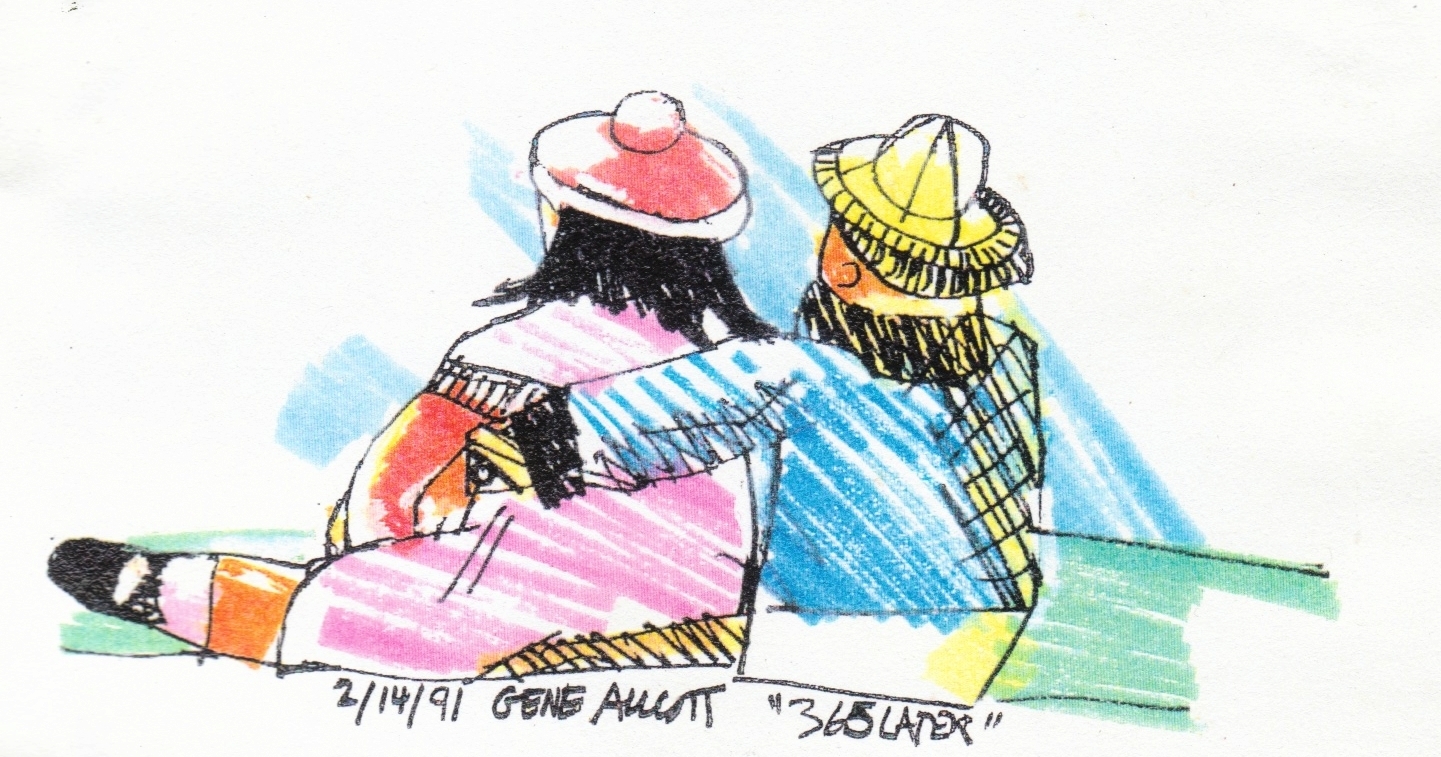
Legacy
Gene Allcott Scholars
SCAD-Atlanta
Established in memory of Atlanta College of Art alumnus Gene Allcott, four scholarships are now awarded annually to fine art students at the Savannah College of Art and Design, in Atlanta.
Gene Allcott Trippers
New York
For 20+ years, the Gene Allcott Fund has sponsored a 4-day trip for SCAD-Atlanta students to explore art in New York City; 10 - 12 students annually.

